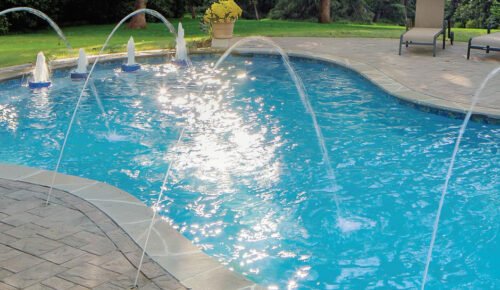You can use butyl pond liner to make a functional pond in your backyard. Butyl liners are tough, flexible and easy to install and therefore popular with DIY pond enthusiasts. This guide will provide steps on how to install a butyl pond liner, helping you turn your dream pond into reality.
Planning Your Pond
Planning is important before starting installation. So what should you consider?
Pond Size and Shape: Sketch a design of your pond size and shape. Use what you have in your yard, choose plants that you like and consider your aesthetic preferences.
Liner Selection: Measure length and width at widest points of your planned pond. Butyl liners come in many sizes – pick one that will cover the pond bottom, sides and an overhang for securing. Add 1-2 feet for overhang to account for edge irregularities.
Underlayment: Buy weed barrier fabric or specialized pond underlayment to protect the liner from punctures from rocks or roots.
Gather Your Supplies
Here are the tools and materials you’ll need for butyl pond liner installation:
- Butyl pond liner (size depends on the size of your pond)
- Pond underlayment – weed barrier fabric or specialized underlayment
- Utility knife
- Scissors
- Tape measure
- Sand or sifted topsoil – optional for smoothing base
- Shovel
- Garden hose
- Big stones/pavers (for securing liner edges)
- Construction gloves (recommended)
Preparing the Pond Site
Excavation: Mark the perimeter of your pond design using stakes and string. Start digging by following your markings. Aim for a smooth, gradually sloping bottom and sides. Alternatively, use sand or sifted topsoil to level the liner base.
Underlayment Placement: The weed barrier fabric or underlayment over the entire excavated area – beyond the pond edge – should be laid out. Fix edges with landscape staples or rocks.
Butyl Pond Liner installation
Unfold the Liner: Spread the butyl liner out in a clear area near the pond site. Avoid dragging the liner on rough surfaces to prevent tears.
Liner Positioning: Position the liner over the excavated area and distribute the material evenly along the bottom and sides. Leftover liner should be enough to fold over edges.
Liner Conformity: Start by pressing the liner into the pond contours starting at the deepest part and working outwards. Smooth out wrinkles or folds with your hands and forearms.
Trimming the Liner: After bending the liner to the pond shape, trim off excess material around the edges with a utility knife or scissors. Give the structure an overhang of about 2 to 3 feet for securing.
Securing the Liner
Liner Overhang: Fold excess liner overhang over the pond lip. You can weigh down the liner with large rocks or pavers.
Liner Edges: For a finished look, tuck the liner edges under decorative rocks, edging stones or create a gravel border around the pond perimeter.
Filling Your Pond
Initial Fill: When the liner is secure, fill the pond with water using a garden hose slowly. Watch the liner for leaks or bulges as water level rises.
Leak Detection and Repair: Find the source of a leak and drain some water to allow repairs. Butyl liner repair kits are available as a simple patch solution.
Final Touches: When the pond is filled, and any leaks are fixed, you can add plant life, rocks, and fountains.
































































































































































































































